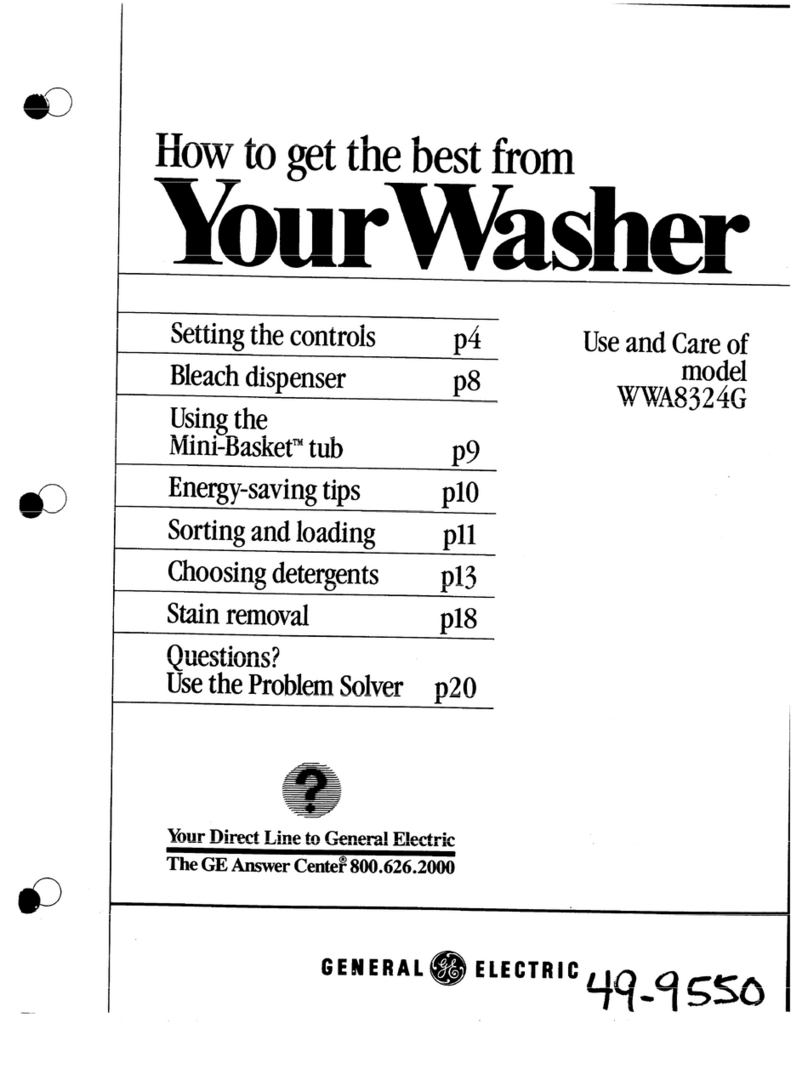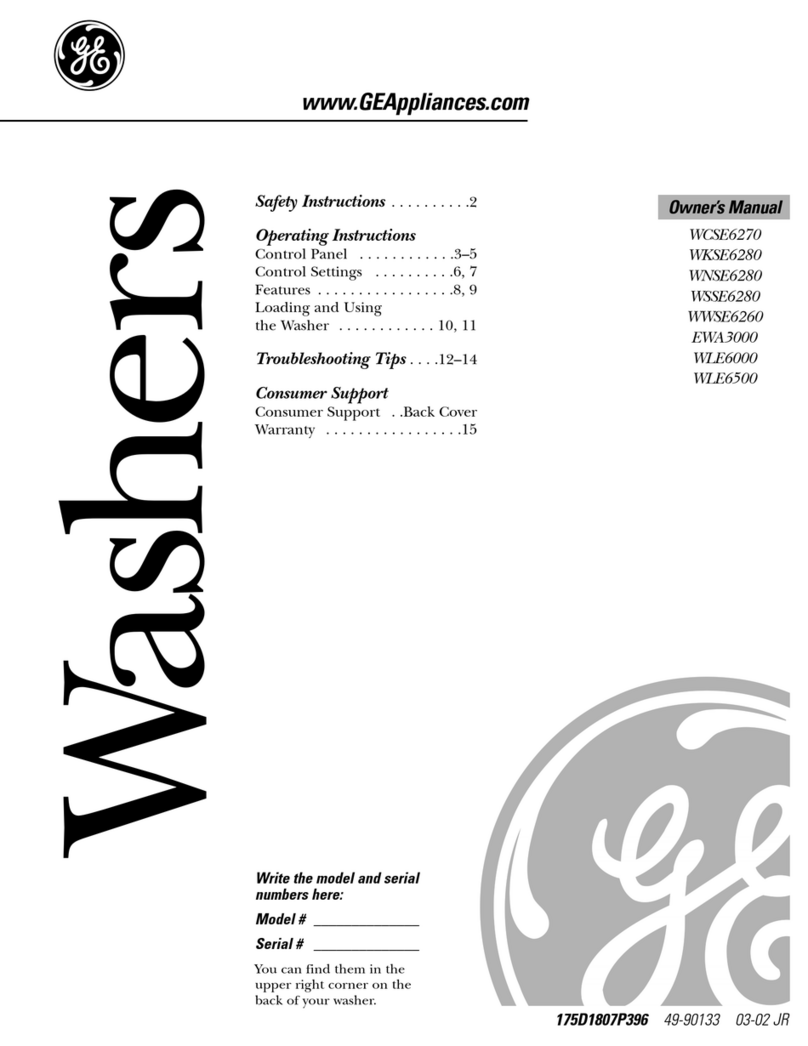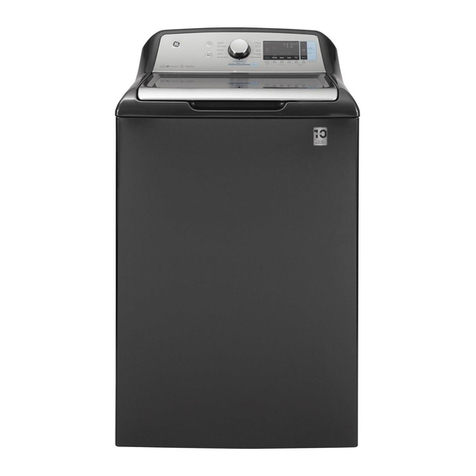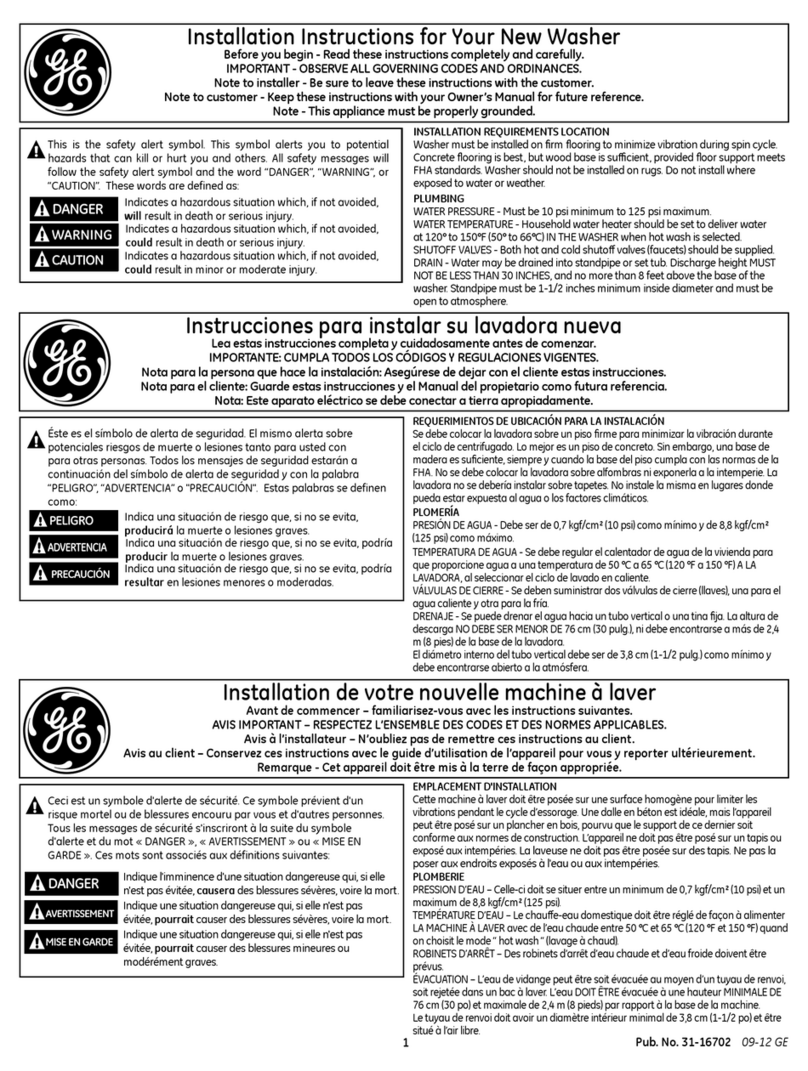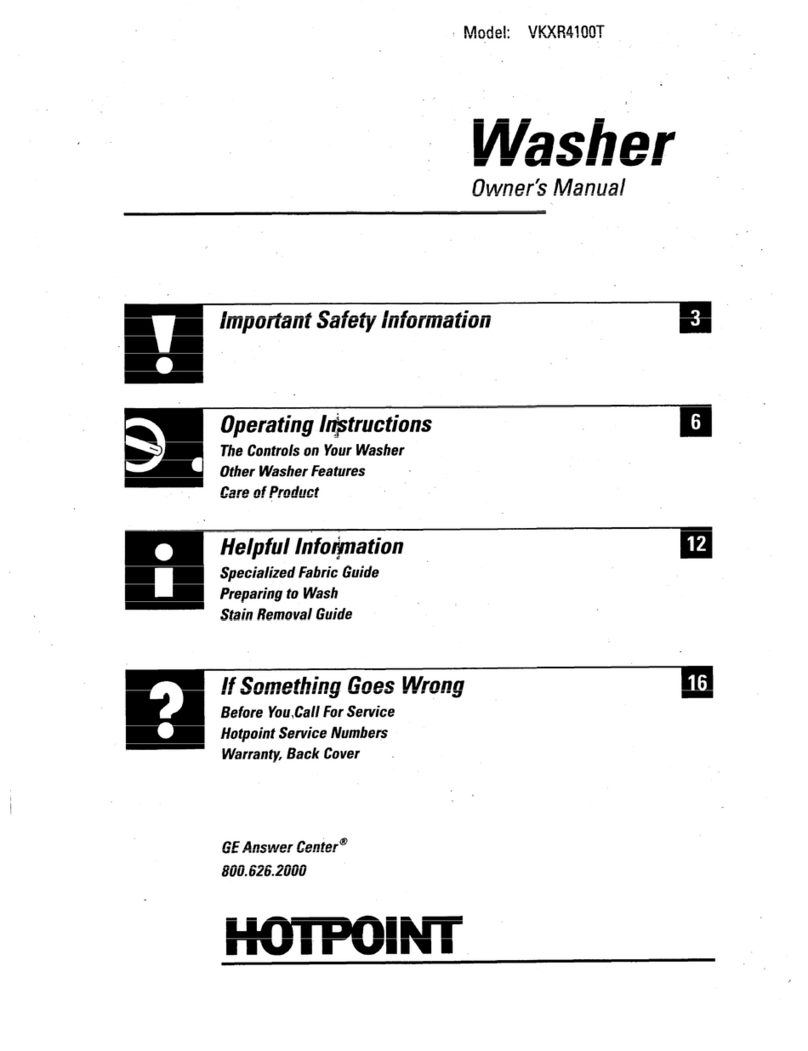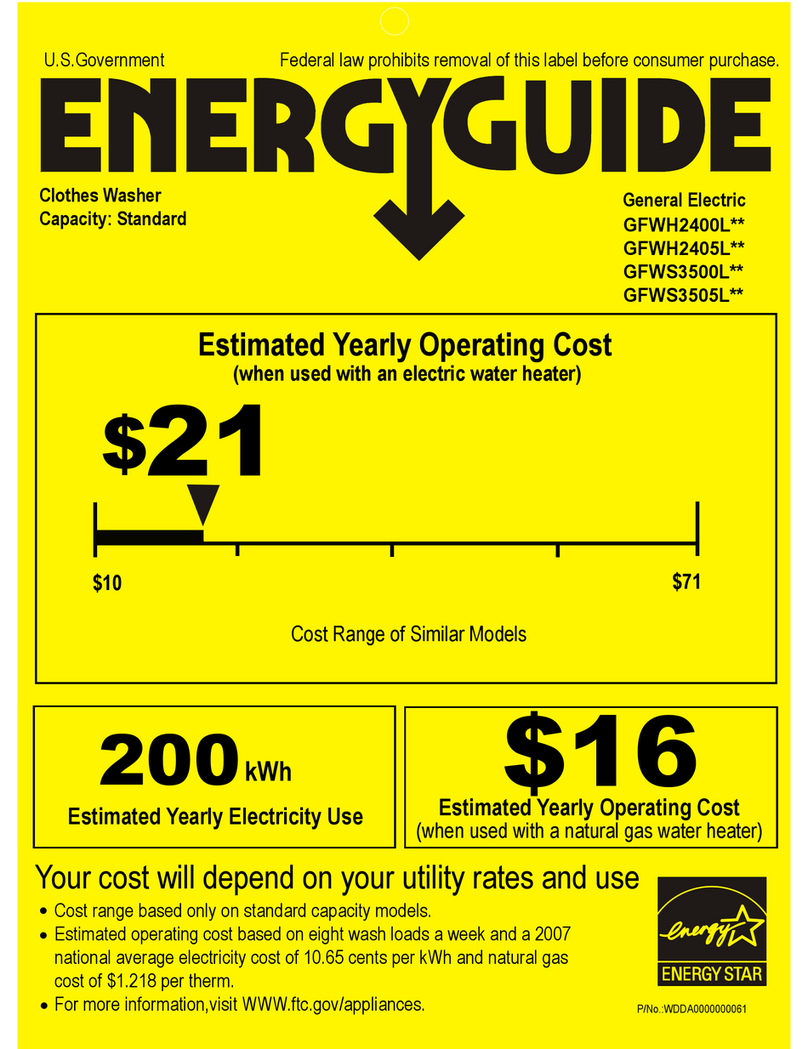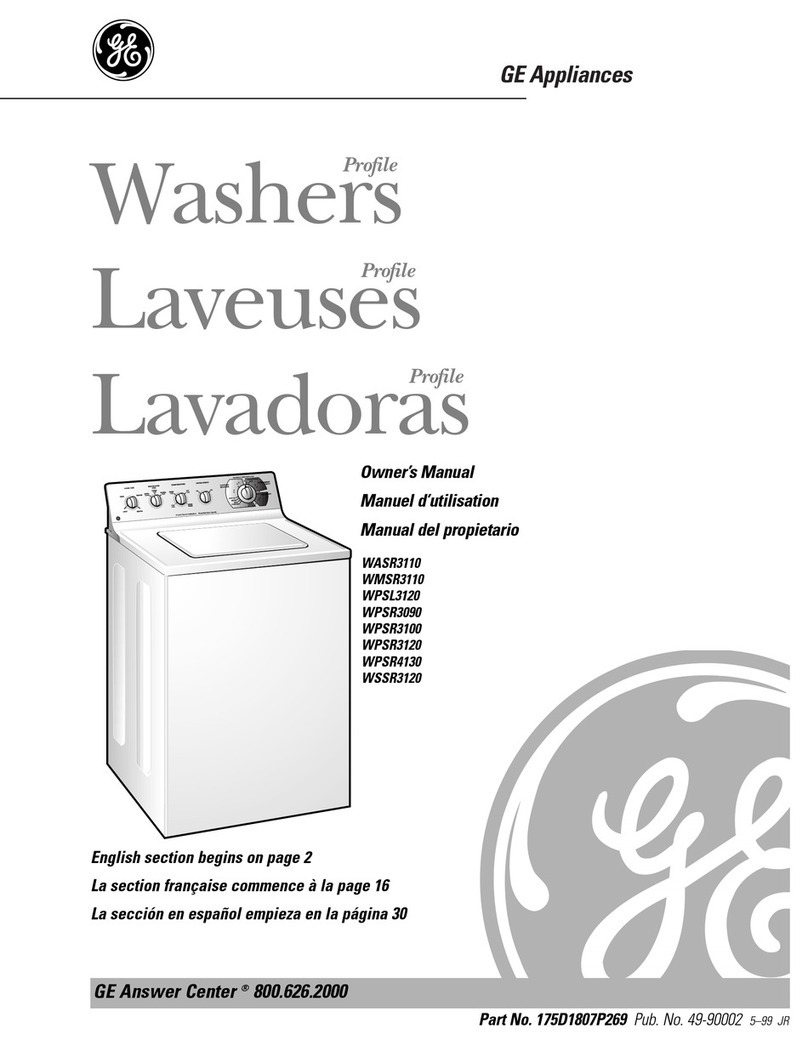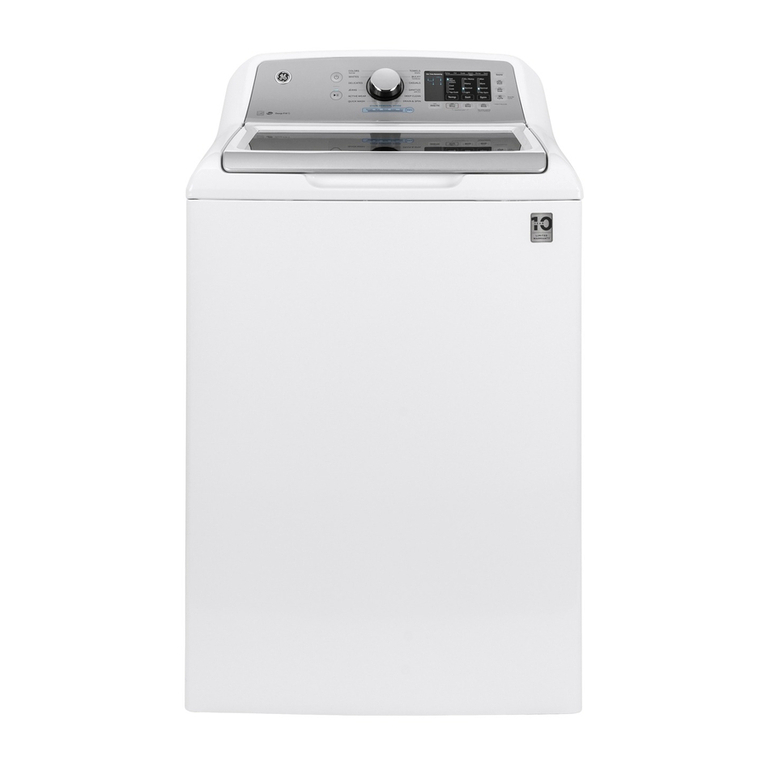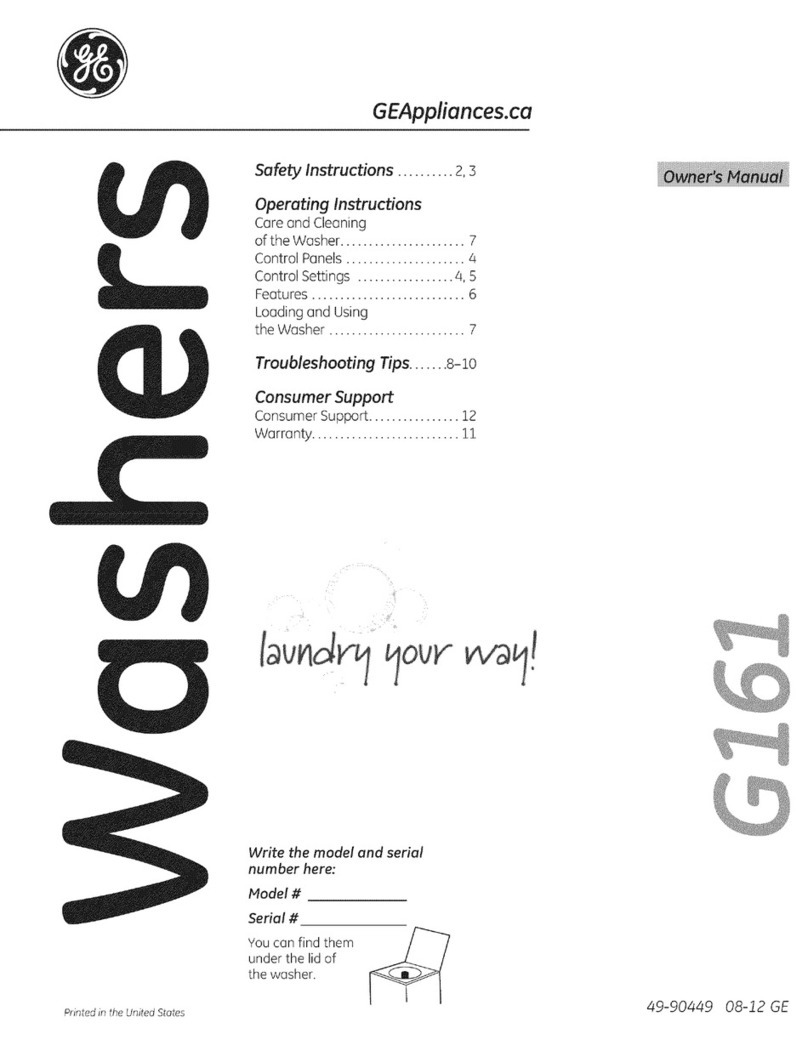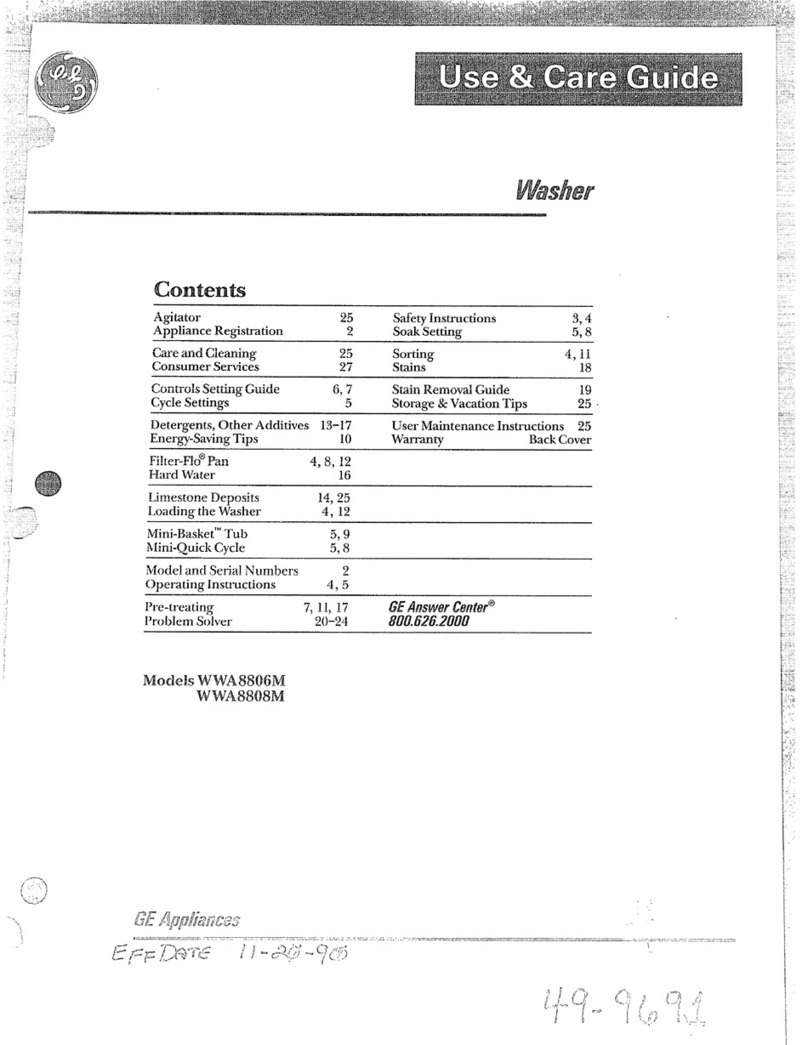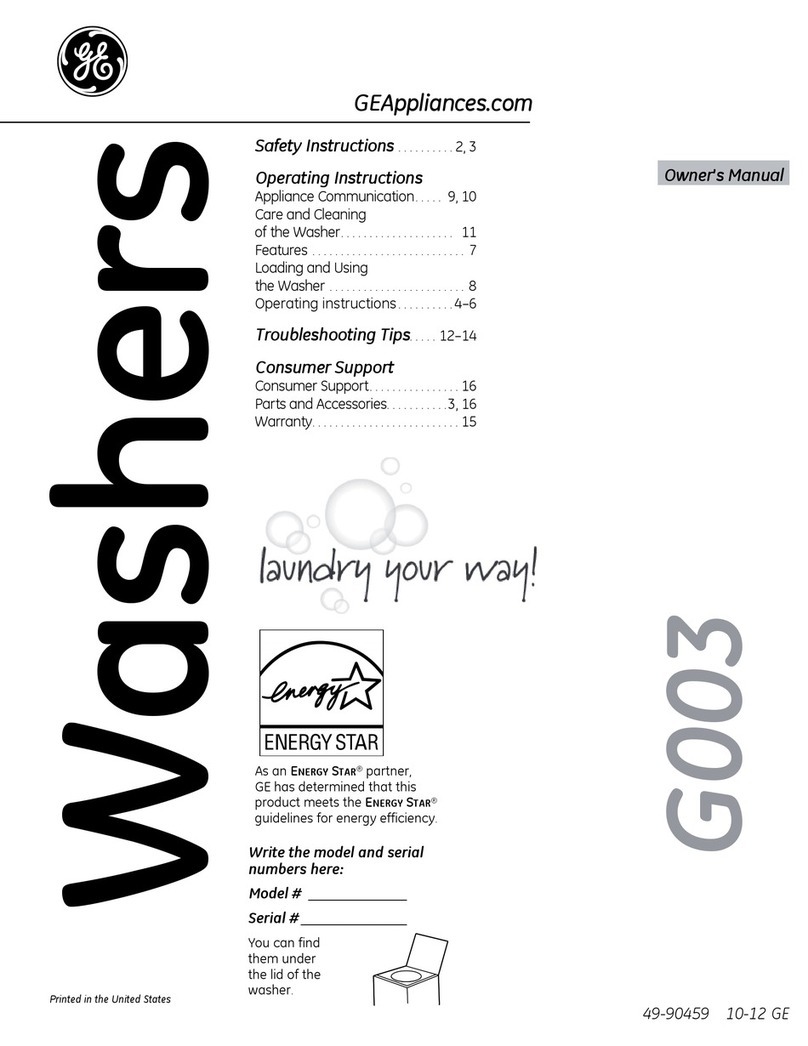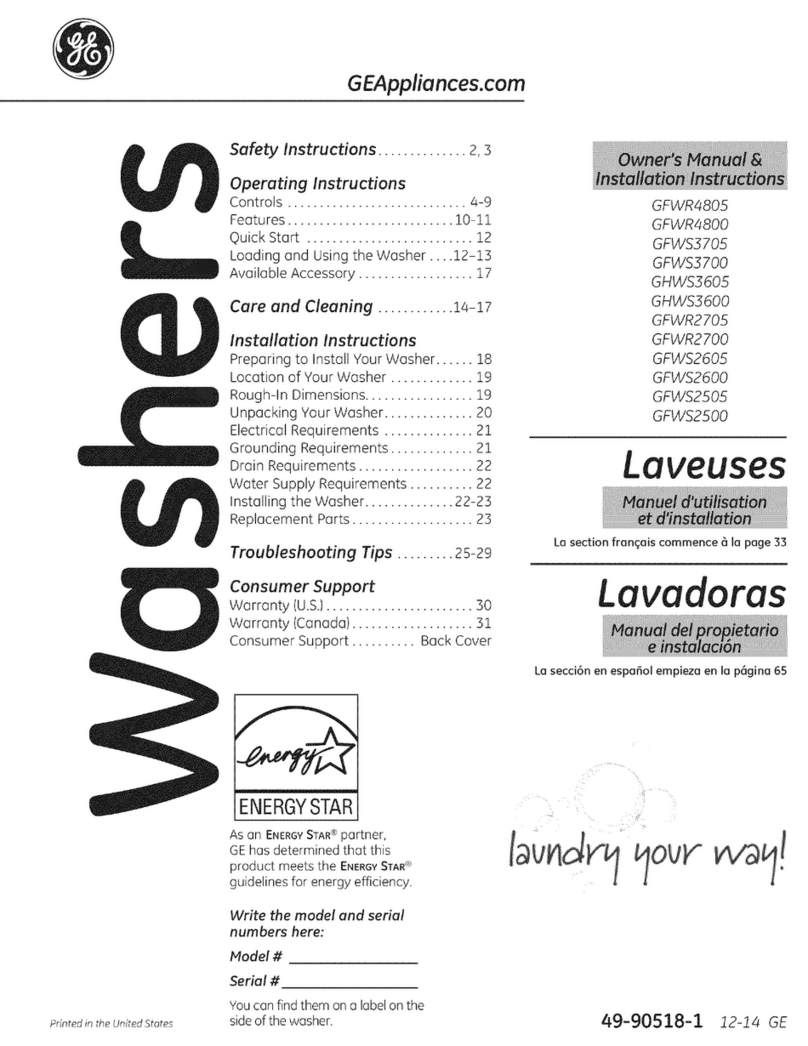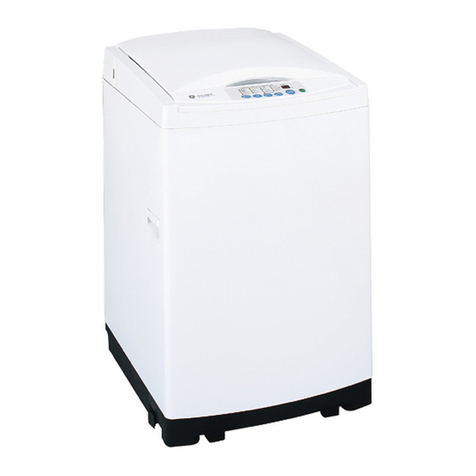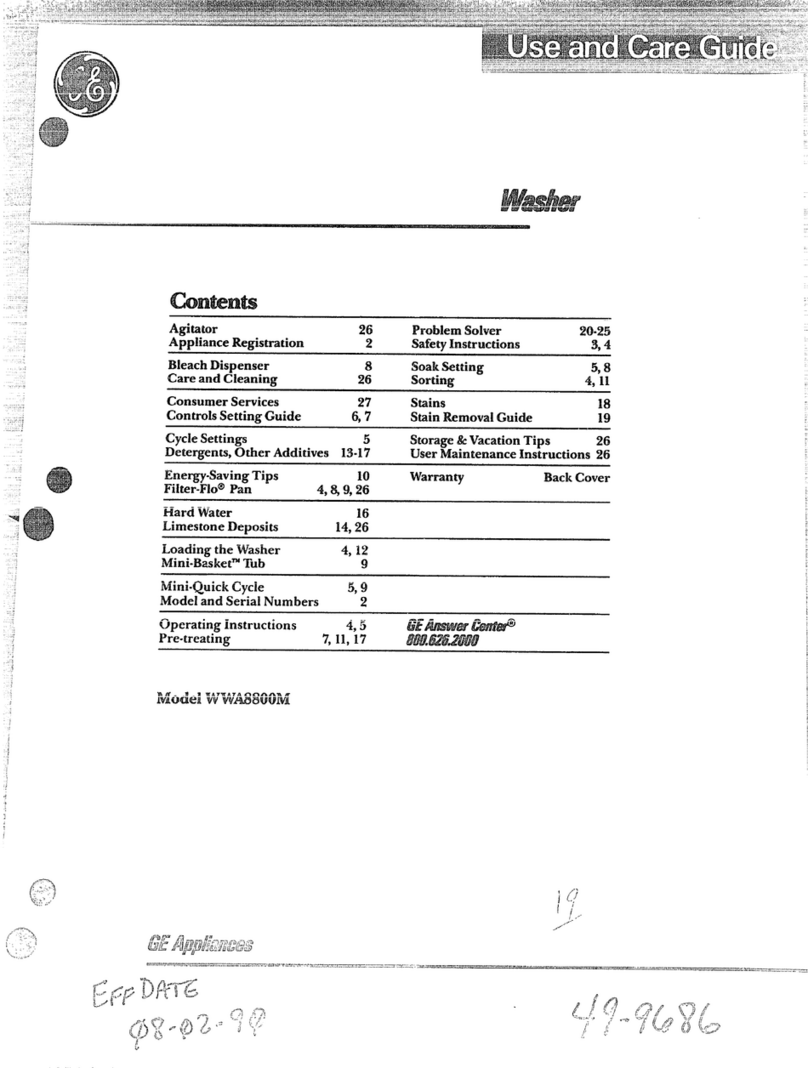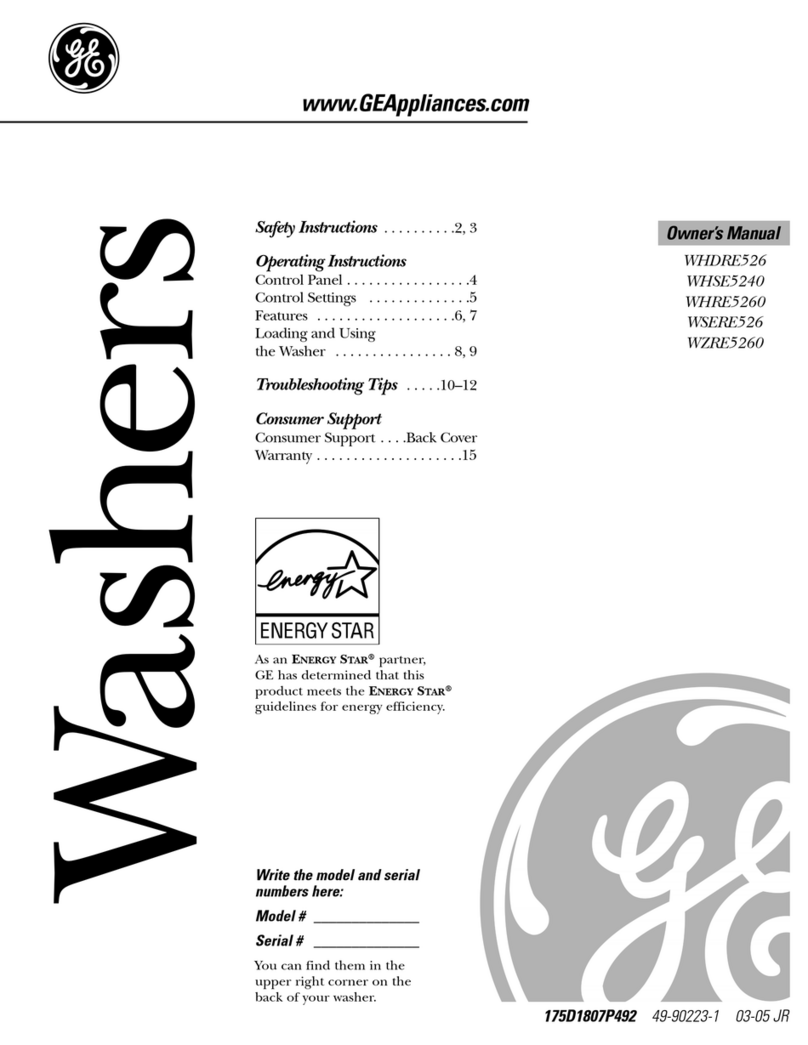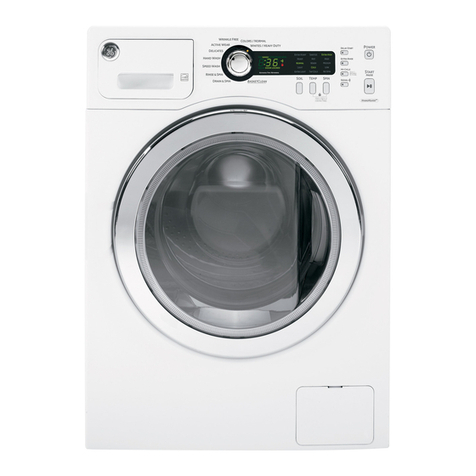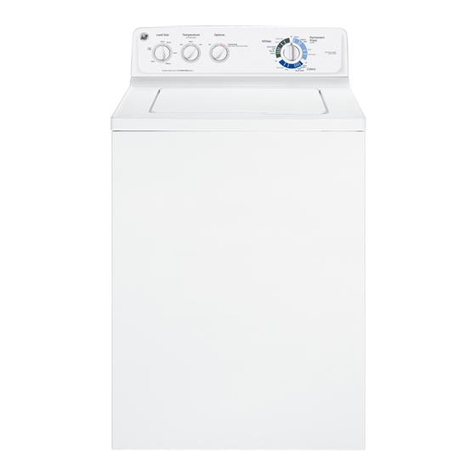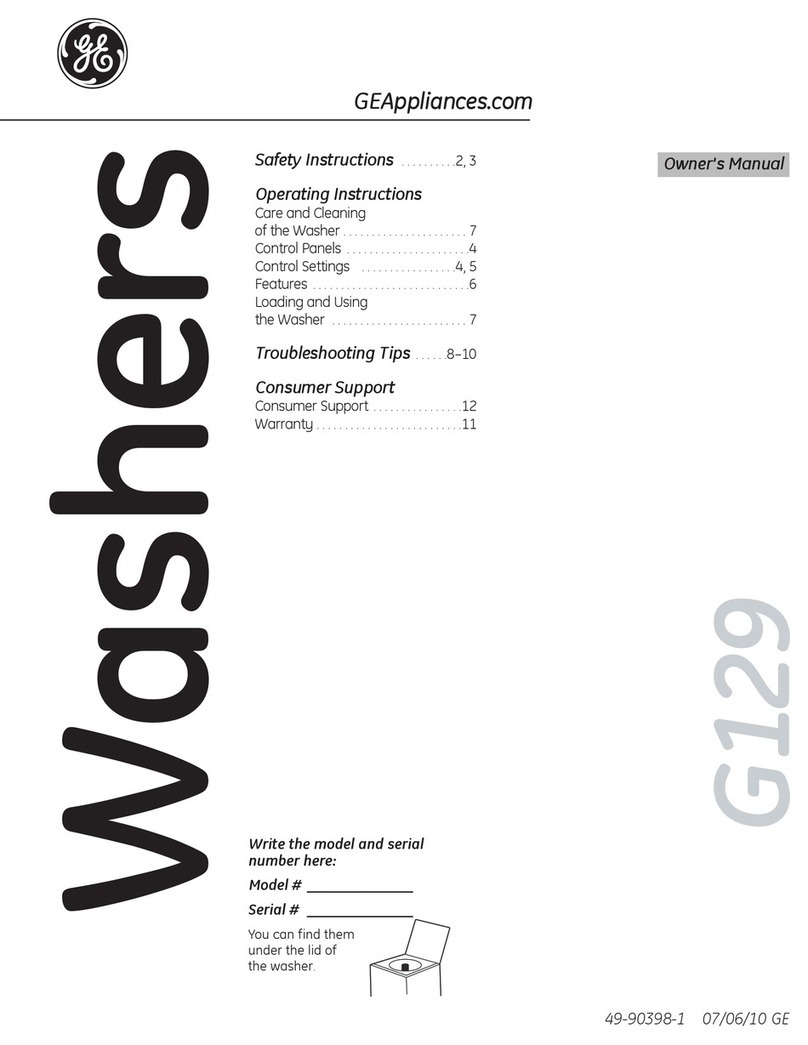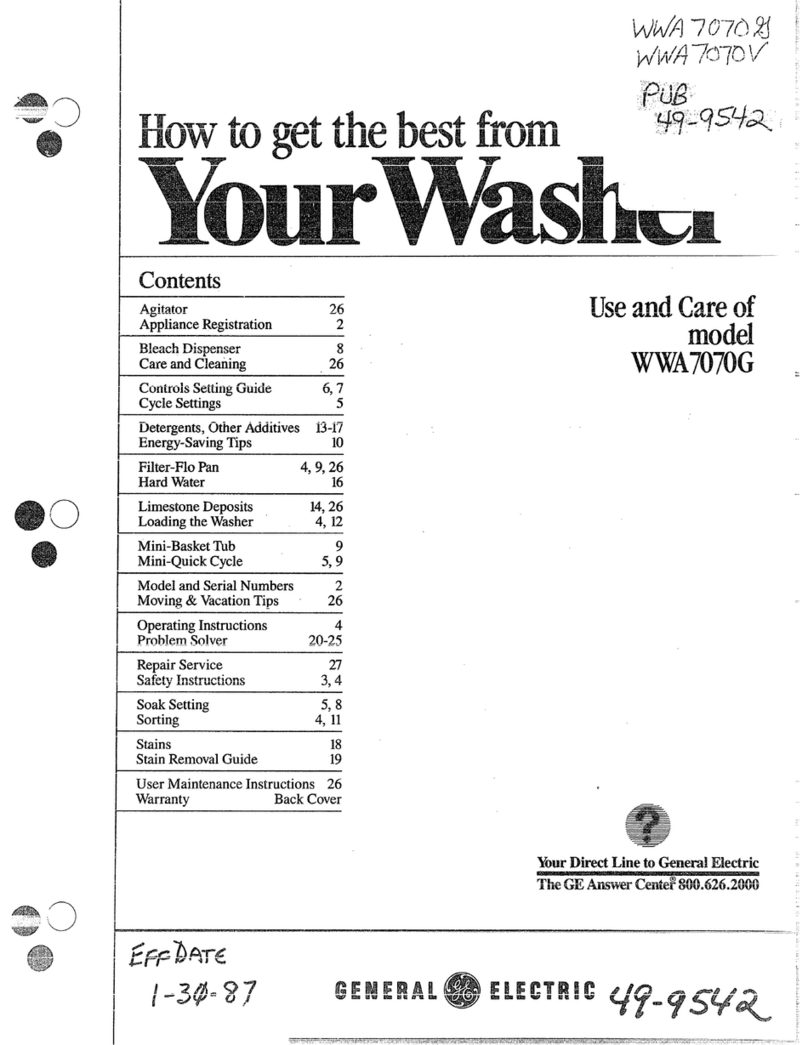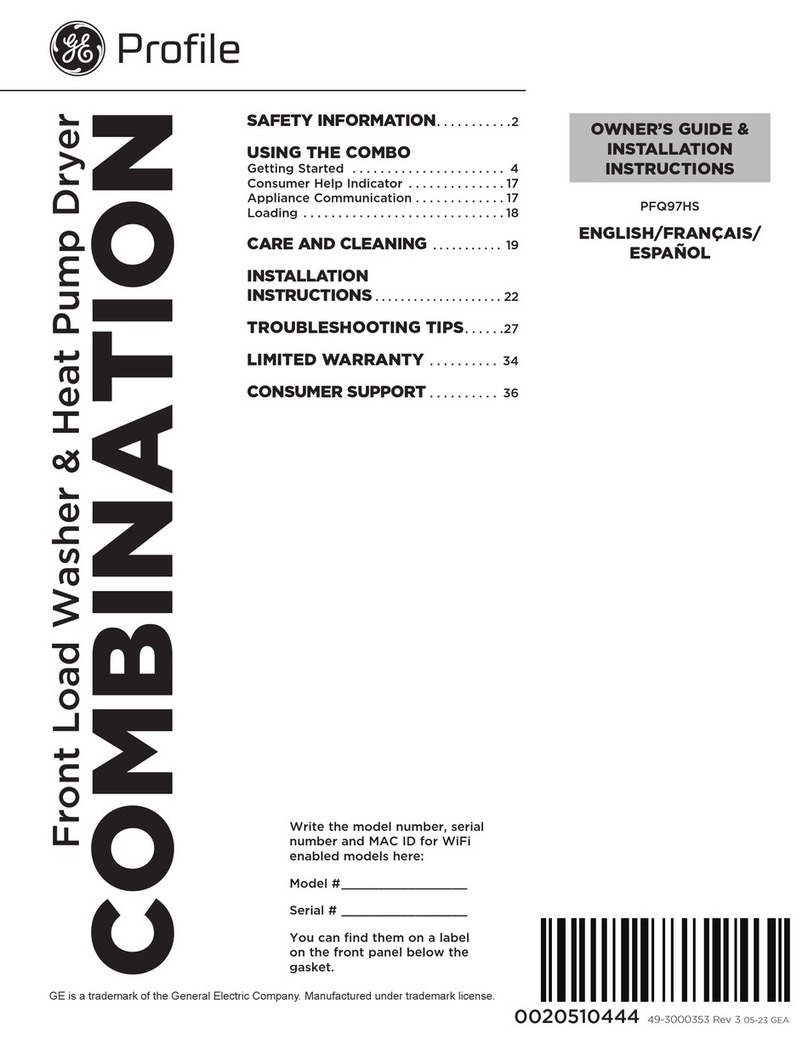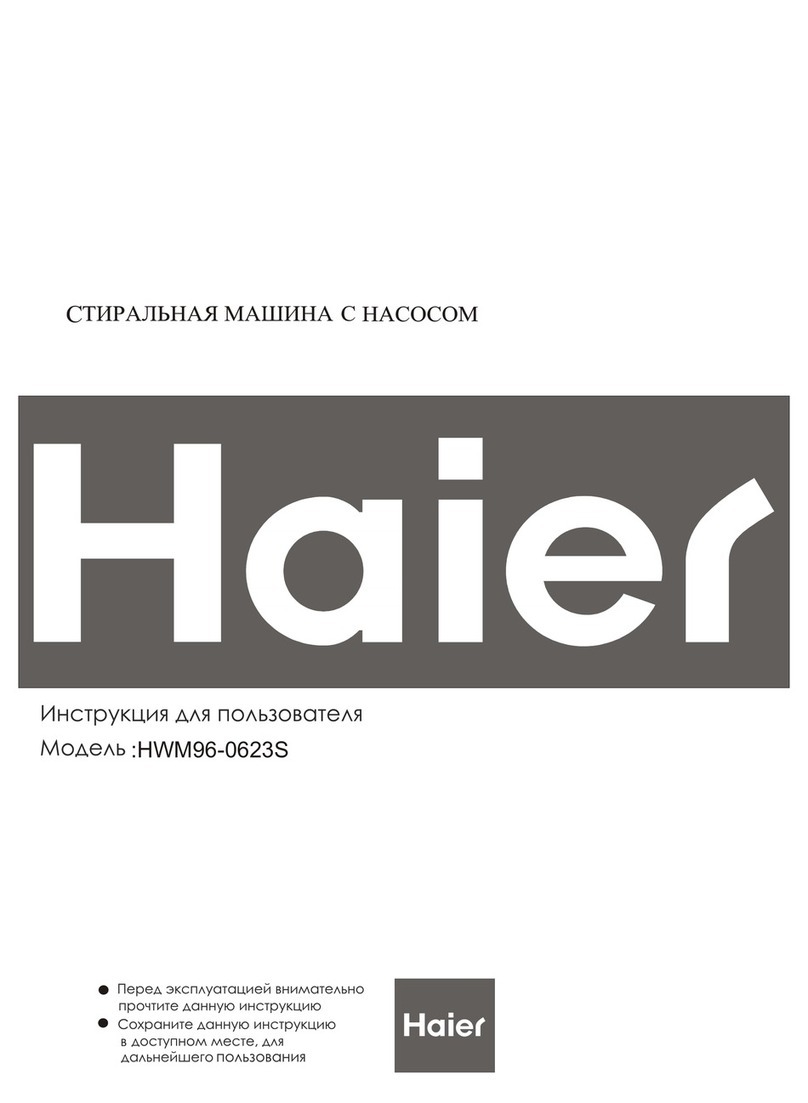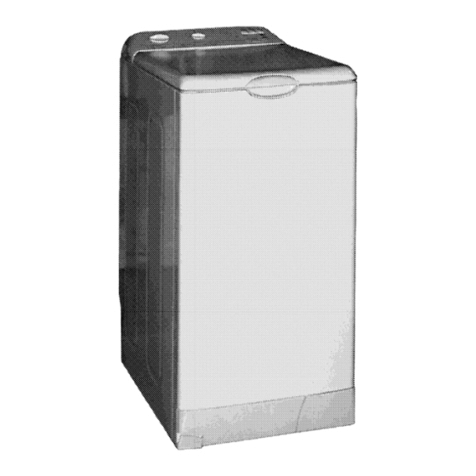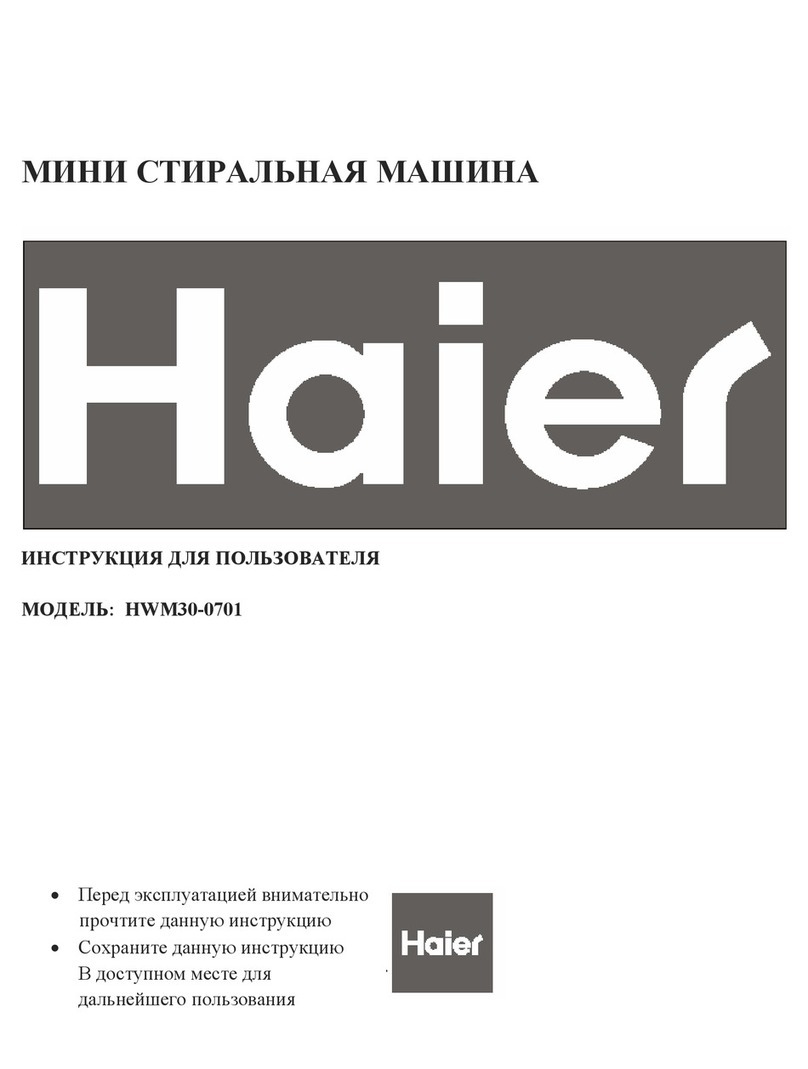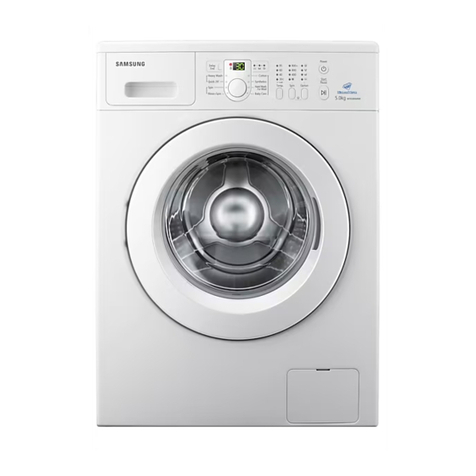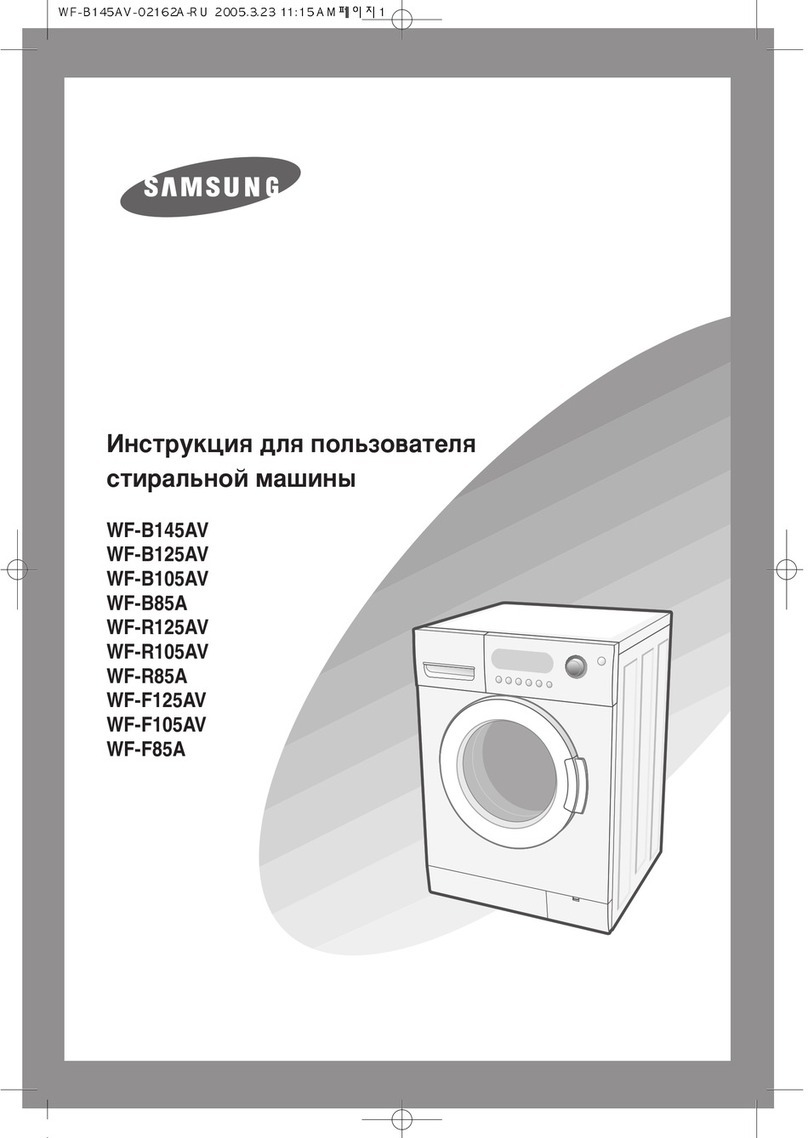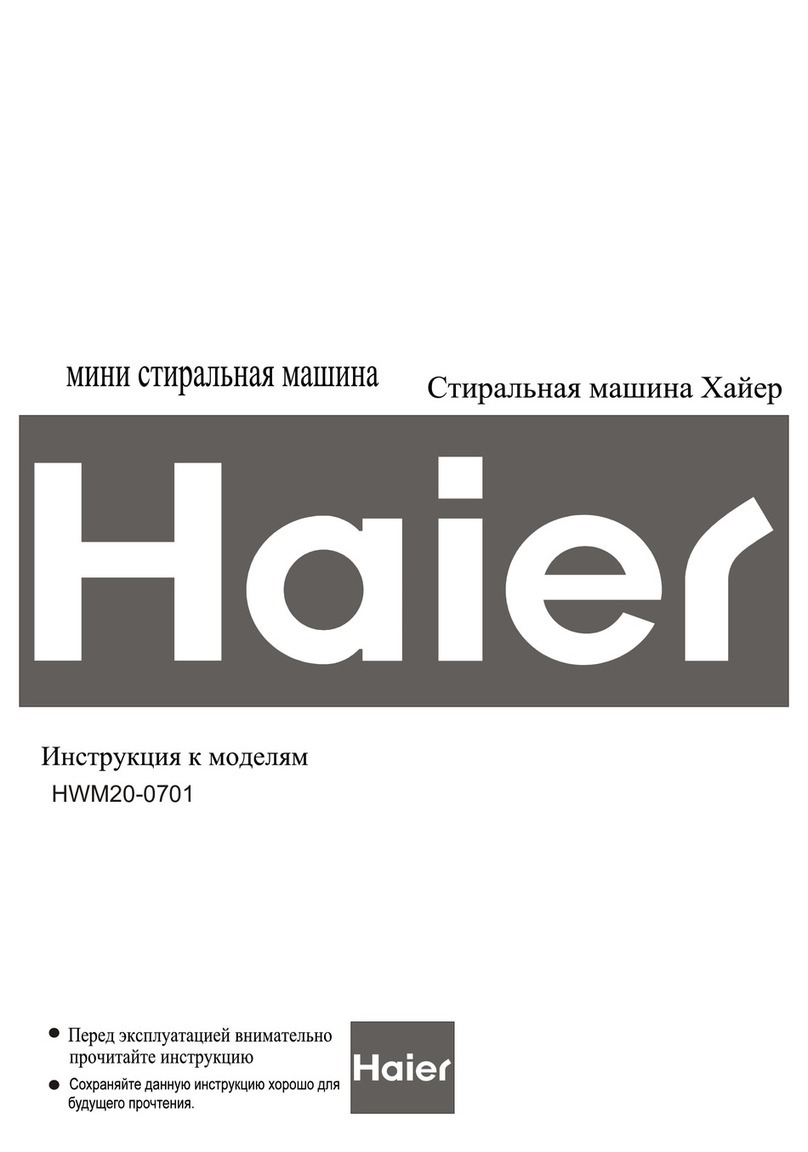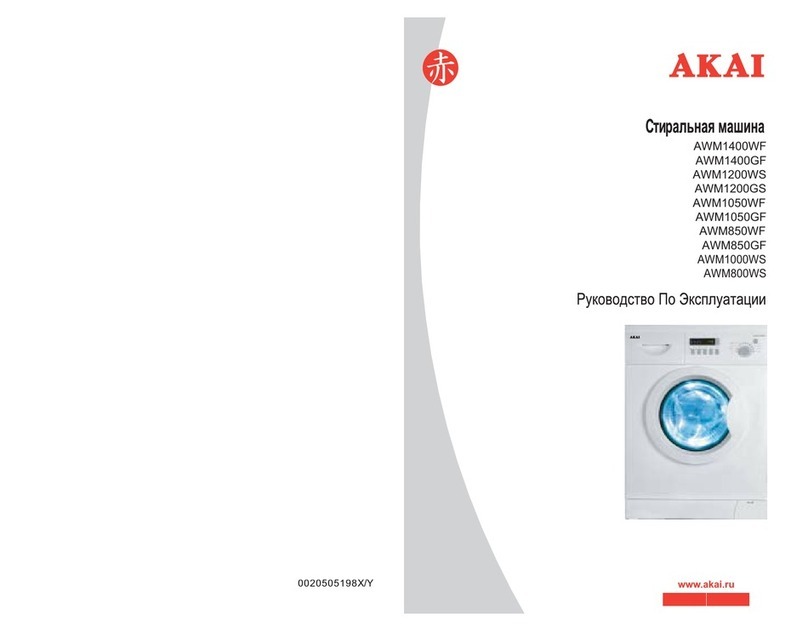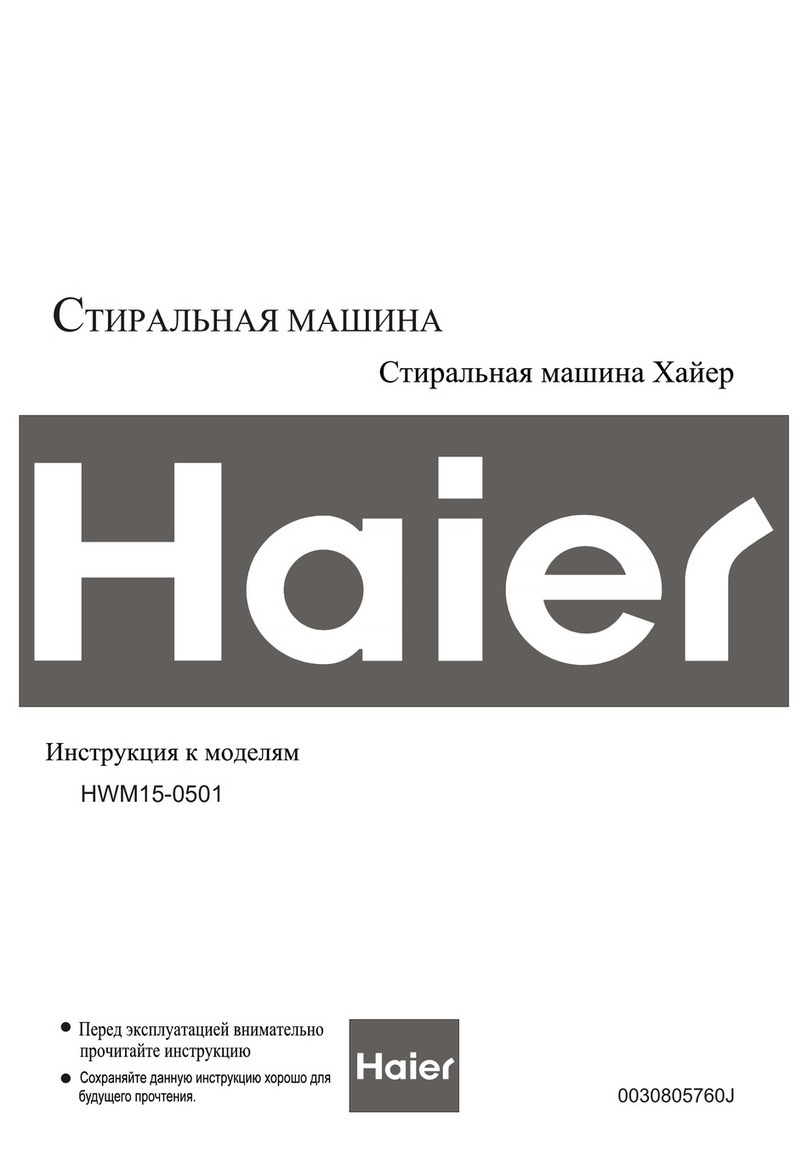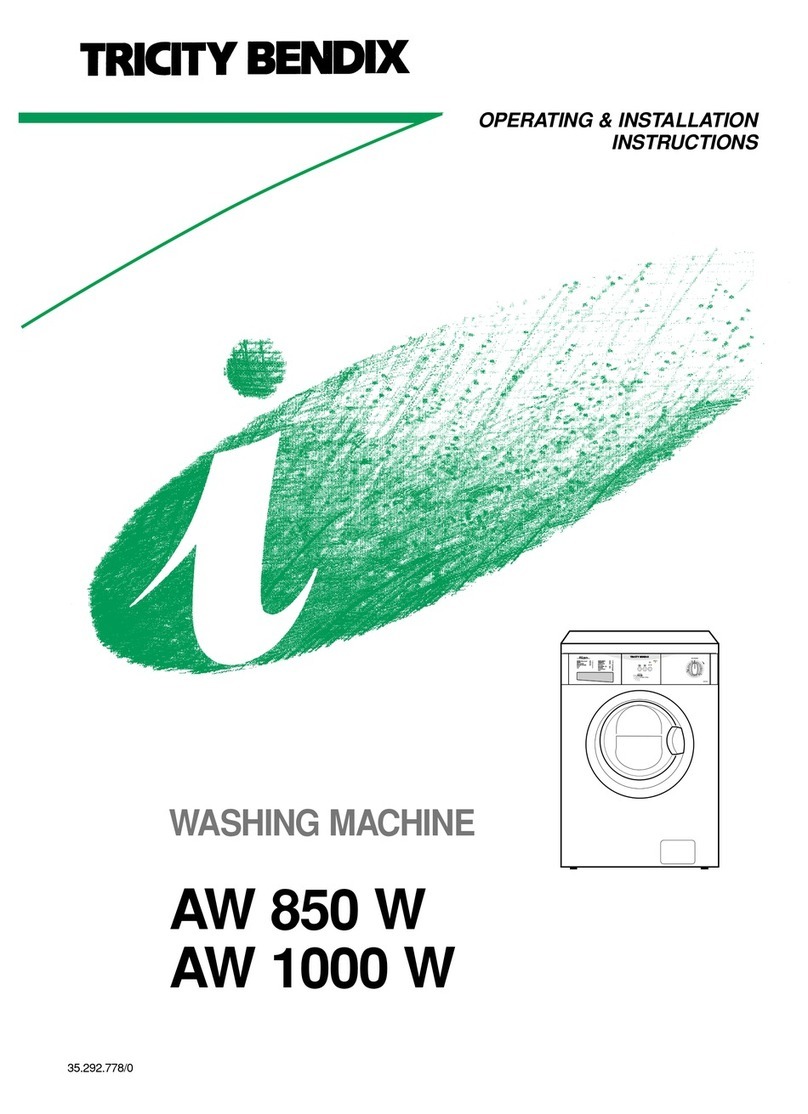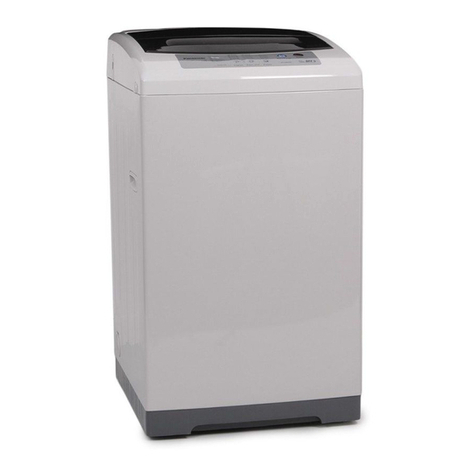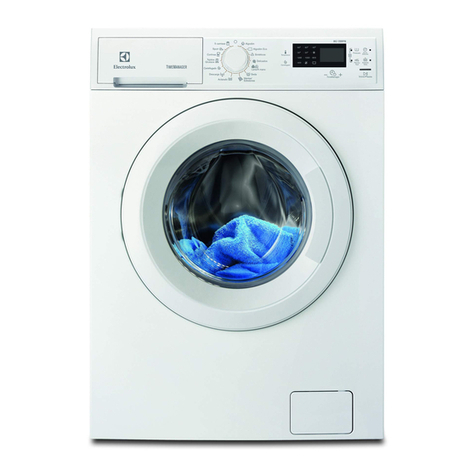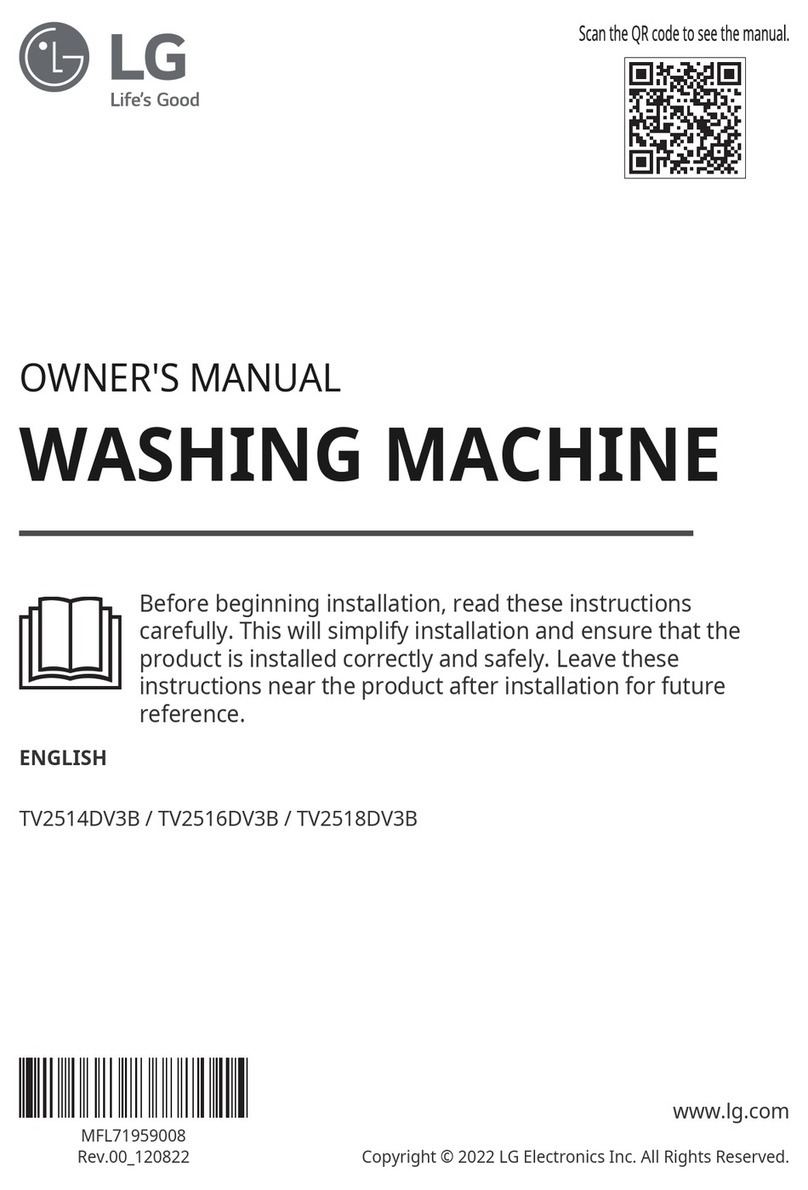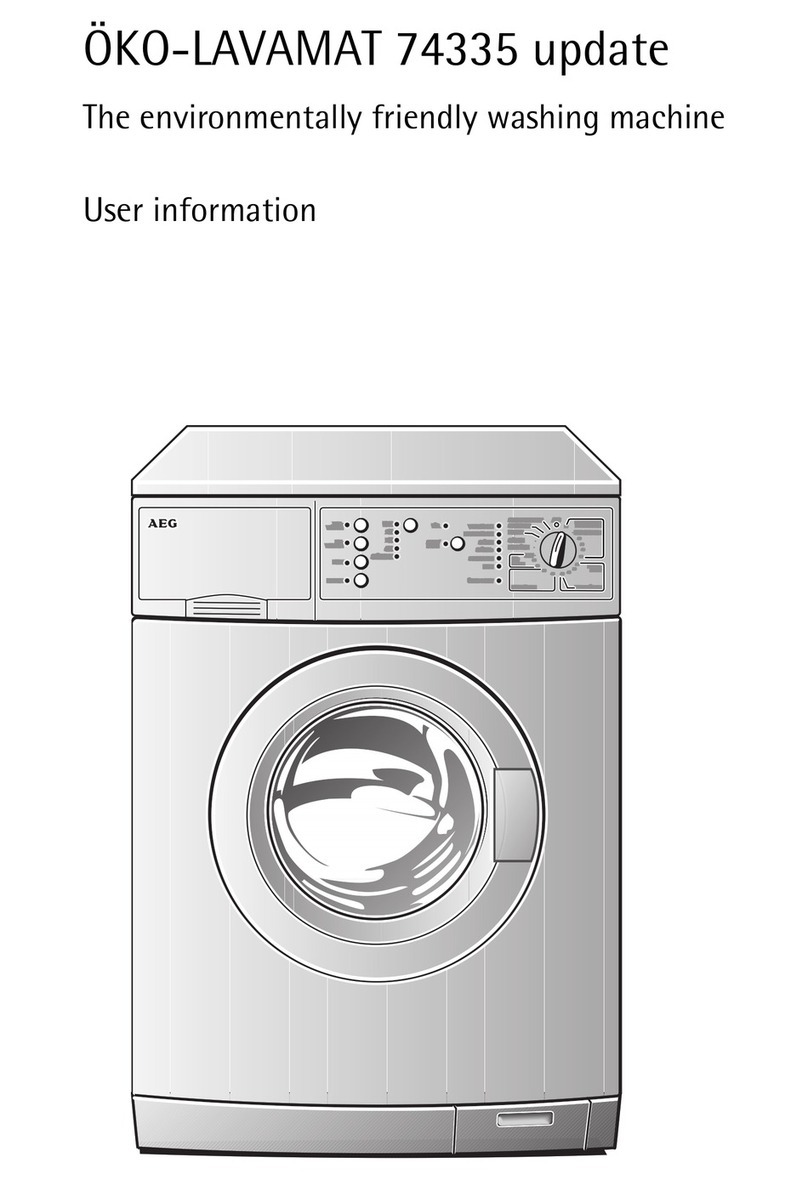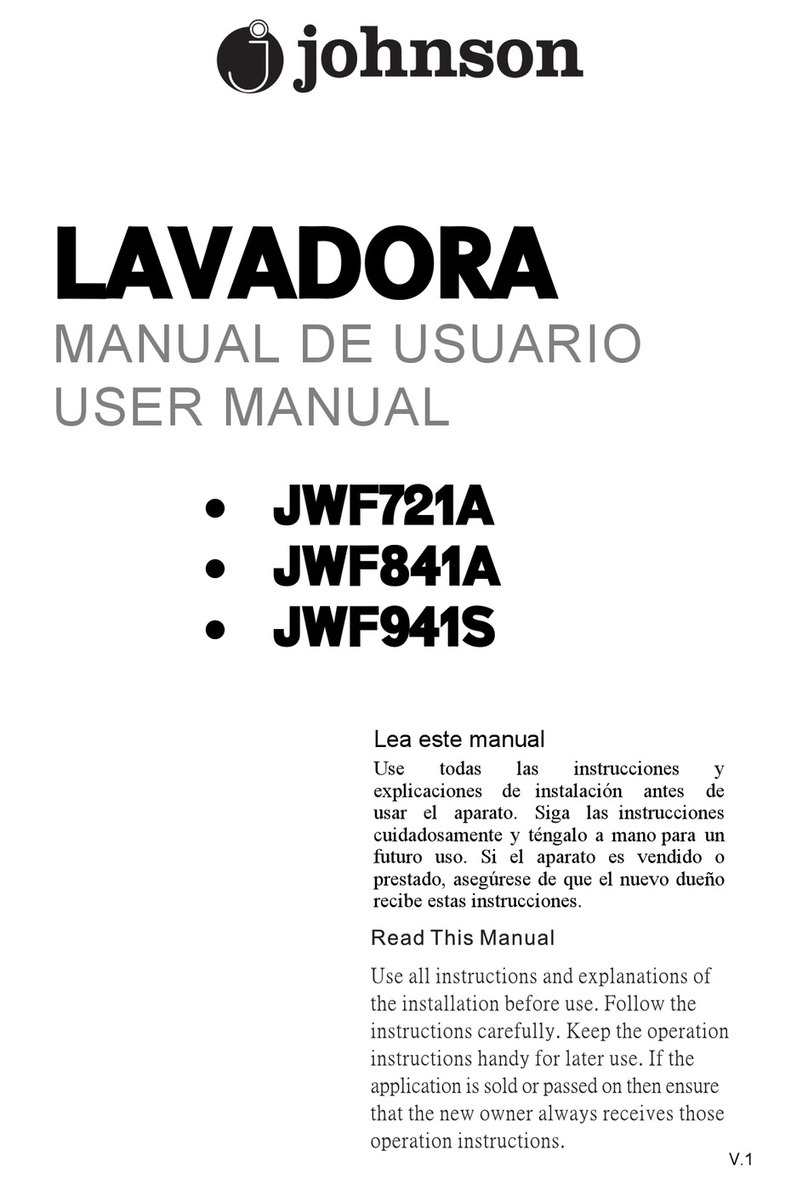—mPORTMT SmETY mSTRUCTIONS
ReadWIimtructiombeforewingthkappliance.
__-mS_____
‘–m~--- _- ——_
-wARNmG—To reduce the riskof
fire,
electric shock, or injury to
pewonswhen Whg you appIiance,
followbmic prcwutiom,hciuwng
thefollowing:
~Usethis appliance only fori~
intendedpurposeasdescribedin
thisUseandCareBook.
@Thiswashermustbeproperly
instied and locatedinaccordmce
withtheInstallationInstructions
beforeitisused.Ifyoudidnot
receiveanInstallationInstructions
sheetwithyourwasher,youcan
obtainonebycontactingtheservice
locationnearestyou.
–Roperiy groundtoconform
withallgoverningcodesand
ordinances.Followdebilsin
InstillationInstructionse
–Installorstorewhereitwilinot
beexposedtotemperaturesbelow
frtezingorexposedtotheweather.
–ConnecttoaproperIyrated,
protectedandsizedpowersupply
circuittoavoidelectricaloverload.
–Connec~toadequateplumbing
Tominimhe thepossibility
Ofinjury:
@Donotmixchlorinebleachwith
ammoniaoracidssuchasvinegar
and/orrustremover.Mixingcan
produceatoxicgaswhichmay
causedeath.
~Donotwashordryarticles
thathavebeencleanedin,washed
in,soakedin9orspottedwith
Combmtibleorexplosivesubstancm
(suchaswax,paint,gasoli]le,
degreasers,dry-cleaningsolvenk,
kerosene,etc.)whichInayignite
orexplode.
Donotaddthesesubstancestothe
washwater?anddonotusethese
substineesaroundyourwasher
and/ordryerduringoperation.
wm~–m~o~~~ GMis
producedbythechemicalaction
wittinyourwaterheaterand!the
gascanaccumulateinthewater
heaterand/orwaterpipesifhot
waterhasnotbeenusedfora
periodoftwoweek orlonger.
HYDROGENGASCANBX
EXPLOSNEUNDERTHESE
cRmsTANcme so toprevent
thepossibilityofdmage orinjury,
ifyouhavenotusedhotwaterfor
twoweek ormore,ormove intoa
residenceinwhichthehotwater
systemmaynothavebeenusedfor
so~netime9turnonailhotwater
faucetsandallowthemtorunfor
severalmiIIutes
beforeusingany
electricalappliancewhichis
connectedtothehotwatersystem.
TIIiswillallowanyhydrogen
gas
toescape.sincethegasis
flammable,donotsmoke oruse
anopenflameorapplia~lce
duringthisprocess.
QNeverreachintoUWasherWhile
itisIIloving.Beforeloading9
ll~lloaflingoraddi13gclGtlies9pMsh
i]itilecy&]e~~~~&~Q~]{~~~~Q
46ST’0P99posifio129t!EeB2waittlntil
,4-~= .]. E]o~,~ol?]qletely
iiJ5IllatiilllleJscid,.OLI.,
Gt,bi.j,!jLt];j&f.Q;”o ‘:
.
~,..-.3gn<J*<J* -uo~~’s!lingtilelid.
‘.s
3
@Closesupervisionisnecessary
ift~nisapplianceisusedbyornear
children.Do notailo$vchildren
toplayinside,onorwiththk
applianceoranydiscarded
applianaee
Disposeofdiscarded
appliancesandshippingor
packing
materialsproperly.
Beforediscardinga}vaqher~or
re~novingfromservice9remove
thewasherlid.
@KeepallIaundryaids(suchas
detergents,bleaches,fabricsofiners,
etc.)outofthereachofchildren,
preferablyinalockedcabinet.Observe
allwarningsoncontainerlabelsto
avoidpersonalinjury.
@Keeptheareaaroundand
underneathyourappliancesfree
fromtheaccurnulationofcombustible
materials,suchaslint,paper,rags,
chemicals,etc.
@Keeptheflooraroundyour
appliancescleananddrytoreduce
thepossibilityofslipping.
@Tominimizethepossibility
ofelectricshock,unplugthis
appliancefromthepowersupply
beforeattemptinganymaintenance
orcleaning(excepttheremovaland
cleaningofthelintfilter).
N~E: TurningtheCycleSeiector
knobtoanOFFpositiondoesNOT
disconnecttheappliancefromthe
powersupply.
~Donot tiinper withControls.
oDonotoperatethisappliance
ifitisdamaged,~nalfunctioning,
partiallydisassembled,orhas
missingorbrokenparts,iRciuding
adamagedcord.orplug.
@Neverclimbonorstandontile
washertop.
QDo~~o~washfiberglassarticlesill
yourwasher.Skinirritationcould
resultfror~ltileremainingpfirticles
thatnlaybepickedklpbyclot12iIIg
duringst]bsequelltv~a$h~r[:~S~.
c..—.—. >-,
(Co)tri;)t!edriex?pagd?).>
—...,-—,___
].H’N
